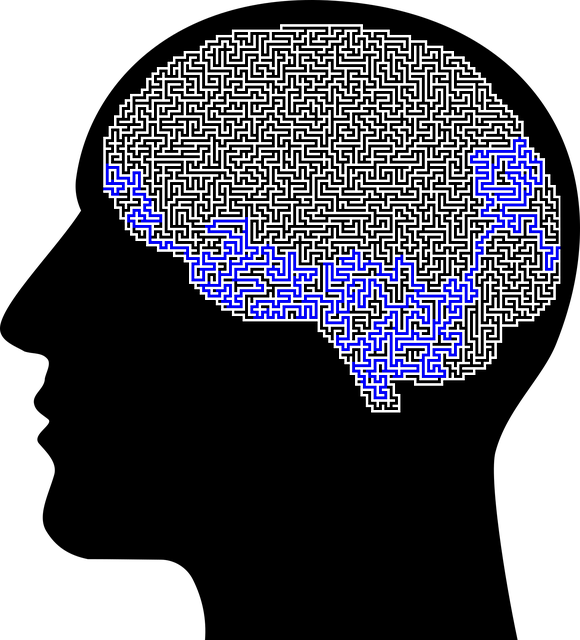Highlands Ranch Codependency Therapy transforms communities by prioritizing engagement and accessibility. Their targeted approach identifies specific populations like adolescents and low-income families, offering tailored interventions for unique emotional challenges. Through research, stakeholder collaboration, and cultural sensitivity, they design long-term strategies promoting mental well-being. Implementing compassion cultivation and strategic outreach builds trust, breaks stigmas, and empowers individuals to take charge of their health. Meticulous planning, partnerships, and ongoing evaluation ensure the program's success in creating a resilient community.
Community outreach programs play a pivotal role in addressing mental health concerns, particularly within specific regions like Highlands Ranch. This article delves into the implementation strategies for such programs, focusing on Highlands Ranch Codependency Therapy as a case study. We explore why community engagement is crucial and guide readers through identifying target groups, designing effective programs, overcoming logistical challenges, and measuring impact. By understanding these key aspects, communities can enhance access to mental health services and positively impact lives.
- Understanding Community Outreach: Why It Matters for Highlands Ranch Codependency Therapy
- Identifying Target Groups and Needs in the Community
- Designing Effective Programs: Strategies for Success
- Overcoming Challenges: Logistics and Community Engagement
- Measuring Impact: Evaluating the Effectiveness of Outreach Programs
Understanding Community Outreach: Why It Matters for Highlands Ranch Codependency Therapy

In the heart of Highlands Ranch, Codependency Therapy recognizes the profound impact of community outreach as a powerful tool for healing and transformation. It’s not just about providing services; it’s about fostering connections, building trust, and creating a supportive network that extends beyond the therapy room. By engaging with the local community, Highlands Ranch Codependency Therapy aims to break down barriers and reduce the stigma surrounding mental health issues.
This approach is vital for several reasons. It enhances accessibility to care by making therapy more inclusive and less intimidating. Through community outreach programs, individuals facing codependency or related challenges can receive much-needed Crisis Intervention Guidance and develop essential skills for boosting confidence. Moreover, these initiatives promote positive thinking and resilience, empowering individuals to take control of their mental well-being and cultivate healthier relationships within their communities.
Identifying Target Groups and Needs in the Community

Identifying target groups within a community is a pivotal first step when implementing outreach programs aimed at improving overall well-being. Highlands Ranch Codependency Therapy, for instance, can benefit individuals and families grappling with emotional dependencies and maladaptive behaviors. Through comprehensive assessments, therapists can pinpoint specific populations such as adolescents, young adults, or low-income families facing unique challenges related to codependency. This targeted approach ensures that interventions are tailored to meet the immediate needs of these groups, fostering a more impactful and efficient therapy experience.
Understanding community needs is equally crucial. Effective outreach programs should address not just symptoms but also the underlying emotional intelligence and regulation deficits often associated with codependency. By employing Emotional Well-being Promotion Techniques, therapists can empower individuals to develop healthier coping mechanisms, enhance their emotional awareness, and cultivate better relationships. This holistic strategy, focused on both individual growth and community resilience, can significantly contribute to the overall mental health and harmony of Highlands Ranch residents.
Designing Effective Programs: Strategies for Success

Designing Effective Programs: Strategies for Success
Implementing successful community outreach programs requires a strategic approach that goes beyond mere service provision. At Highlands Ranch Codependency Therapy, we understand that creating meaningful connections and fostering positive change starts with understanding the unique needs of the community. This involves extensive research, stakeholder engagement, and designing interventions that not only address immediate concerns but also empower individuals to embrace long-term well-being. Incorporating practices like compassion cultivation and promoting positive thinking can significantly enhance program effectiveness. By teaching participants self-care routine development for better mental health, these strategies cultivate resilience, improve coping mechanisms, and create a ripple effect of positivity in the community.
Effective outreach programs must be tailored to resonate with diverse populations, ensuring cultural sensitivity and relevance. This might involve adapting services to meet specific needs—be it addressing substance abuse, promoting mental health awareness, or offering support for at-risk youth. Through innovative approaches, we can ensure that our efforts not only provide immediate assistance but also contribute to a more compassionate and resilient community, reflecting the values of Highlands Ranch Codependency Therapy.
Overcoming Challenges: Logistics and Community Engagement

Implementing community outreach programs like Highlands Ranch Codependency Therapy requires meticulous planning to overcome logistical challenges. Effective engagement starts with understanding the unique needs and cultural context of the community. This involves conducting thorough research, building partnerships with local organizations, and leveraging appropriate communication channels. Healthcare Provider Cultural Competency Training plays a crucial role in fostering inclusive interactions, ensuring that services are accessible and tailored to diverse populations.
One key strategy is integrating Compassion Cultivation Practices into program design. Encouraging self-care routine development for better mental health can significantly enhance community engagement. By promoting understanding and empathy, these practices bridge cultural gaps, build trust, and encourage active participation. Through collaborative efforts, successful outreach initiatives not only address immediate challenges but also lay the foundation for long-term, impactful change within the community.
Measuring Impact: Evaluating the Effectiveness of Outreach Programs

Evaluating the impact of community outreach programs is paramount to understanding their effectiveness and identifying areas for improvement. Measuring success goes beyond mere participation; it involves assessing tangible outcomes and qualitative feedback from participants. For instance, a Highlands Ranch Codependency Therapy program can gauge its reach by tracking the number of individuals who attend sessions and complete follow-up assessments. These metrics help in determining the program’s impact on mental health awareness and self-esteem improvement within the community.
Additionally, incorporating Public Awareness Campaigns Development strategies allows for a comprehensive evaluation. By measuring changes in public discourse and behavior related to codependency and mindfulness meditation practices, the program can demonstrate its contribution to fostering healthier relationships and improved well-being. This data is invaluable for refining existing initiatives and tailoring future outreach efforts to better serve the community’s evolving needs.
Community outreach programs, as demonstrated by initiatives from Highlands Ranch Codependency Therapy, are a powerful tool for fostering connection and addressing diverse needs within the community. By understanding target groups, designing effective strategies, overcoming logistical challenges, and measuring impact, these programs can create lasting positive change. This holistic approach not only enhances access to essential services but also strengthens the social fabric of the community, ensuring a brighter future for all its members.














